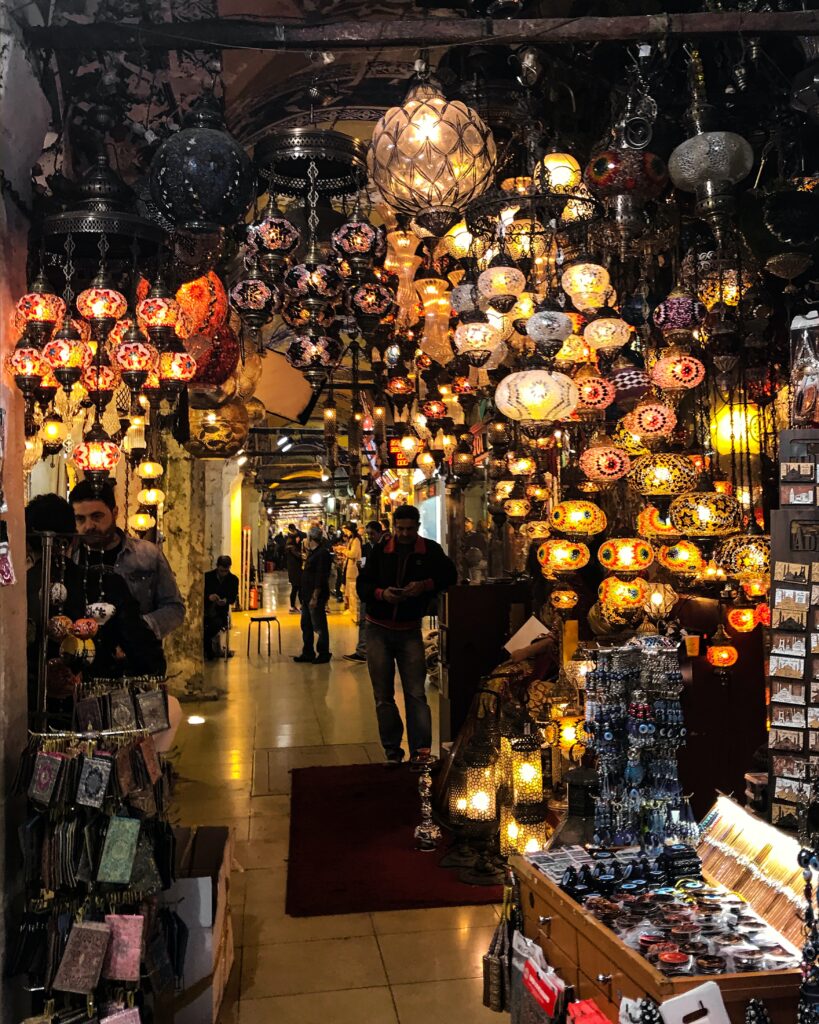How to Create and Apply Your Brand Positioning

Let’s talk about how to create and apply your brand positioning. It’s one of those things that is quite difficult to handle, but probably the one thing that if you get right, can make a world of difference to your business. “If you don’t distinguish yourself from the crowd, you’ll just be the crowd” Rebecca Mark What is brand positioning? Brand positioning is all about creating a distinctive brand image for your ideal client and building brand associations that make your name and business memorable. Your brand positioning… Is what makes you different or better than what your competitors have to offer Highlights a specific benefit that your competition does not have Is essentially what makes customers choose you over competition. Unless you can offer a clear reason, you’ll end up with a confusing message and a samey offering Defines your place in the marketplace. It is strongly connected with the problem you solve and the value you provide. How do you create a brand positioning statement? To start you’ll need to think of 3 elements: your own identity, your ideal client and your competitors. Your brand positioning statement should: Resonate with your ideal clients Be different from your competitors’ Be something that you can deliver Your brand positioning statement shouldn’t just be left in your brand style document. You should reflect it in everything you do in your business. How do you apply a positioning statement to your business? To illustrate this better, here’s our own example, The Orange Notebook’s brand positioning (admittedly, this wasn’t an easy task). Our brand positioning is based on 3 elements: 1. A holistic approach to branding Through our work we combine strategy, content, design and coaching to build powerful brands. We reflect this in our services: we offer coaching on branding as well as DFY services for brand identity, content, website creation, etc. Our entire online presence (website, social media, email marketing) has been created with our own strategy, content and design resources. We also reflect it in our client work. Our clients and potential clients are always welcomed with proposals, contracts and templates that showcase our branding and the benefit of working with us. 2. A cosmopolitan outlook The whole team behind The Orange Notebook comes from Romania. Alina and I are based in the UK, while Beatrice is in Sweden. We are passionate about travelling and every place we visited brought insights and lessons that we applied in our work or content. So far our stories from the Turkish Bazaar and Dracula’s brand have resonated well with our clients. Celebrating different cultures is what brought them closer! 3. Our perspective on branding Branding is not just a logo or a website. It doesn’t start or end there either; it’s a continuous practice centered around the client experience. We reflect that in our values: we don’t take clients or projects we don’t believe in because we want to make sure we always deliver a top quality client experience. We also believe that clients are in full control. No matter what we say, it is their final decision that matters, because there is always an alternative. We work hard behind the scenes to ensure our clients enjoy a VIP experience working with us, so that they always feel empowered and in control of their brand. What about your brand positioning? If you feel your brand doesn’t clearly position you as an expert in your field, we can help. We can work together on your brand identity, positioning strategy, and attracting your ideal client. We’ll start off with an audit of your entire presence online and then give you the insights, advice and templates that you can apply straightaway. It really is that easy!
How To Create A Client Onboarding Package To Elevate Your Brand Experience

Recently, we shared with you on our social media our secret to more money and freedom: the client onboarding package. In this post, we’ll show you: #1 What does it mean to have a client onboarding package? #2 How do you structure an onboarding package? #3 What to include in an onboarding package? #4 How does a client onboarding package look like and when should you send it? #5 Why is the onboarding package important to your brand? Before having an onboarding package, we had emails or calls about work on Sundays, on holidays, at midnight (a 4 am one was particularly annoying). But we always felt the need to reply. So we introduced an onboarding package that: For us, this translated into FREEDOM and MONEY. So here’s everything you need to know about this one small, but impactful element of your branding experience. #1 What does it mean to have a client onboarding package? When creating your client onboarding package, there are 2 things your need to consider: 1. The client perspective: what it means to your clients From the client’s perspective, your client onboarding package sets the rules and expectations of your engagement with your clients. Your clients will perceive you as a serious and committed professional and feel reassured by knowing how your work engagement will run. From your perspective the client onboarding package sets boundaries for your business and creates freedom and space for more clients/projects, so that your business can grow and scale. #2 How do you structure an onboarding package? Think about this as an opportunity to not only tell your prospective clients how you work, but also to convince them to work with you by making it easy for them to take action. We have 4 sections in ours: #3 What to include in an onboarding package? Think about this from your client perspective: what do they need to know? What would make their decision easier and what do they need to be reassured of with regards to your services? Our onboarding package includes: #4 How does a client onboarding package look like and when should you send it? Typically, an onboarding package is a PDF document, structured, written and designed with your brand elements. We like to send it when the client has greenlighted the proposal and confirmed they want to work with us. We attach it alongside the contract. You can send it earlier. Some entrepreneurs choose to send it before the discovery call. Because the onboarding package feels a bit like a VIP service, it may also make the client more interested in having a discovery call. #5 Why is the onboarding package important to your brand? It’s all about the client experience and you should always aim to create a VIP experience. A while ago we shared a post about what your customers want from your brand. In the post, you will find that consumers have high expectations of brands and that your relationship with your clients should go beyond a transaction. We used Maslow’s Hierarchy of Needs to illustrate how you can address typical client needs in your content. Your clients want to feel safe, reassured, taken care of and empowered. This is what they will actually remember from working with you. So if you want powerful testimonials and social proof, focus on providing the best client experience you can. And your onboarding package is part of that.
6 Negotiation Tips to Make Better Deals in 2021

Running a business means you always have to strike good deals with your clients and partners and these 6 negotiation tips will help you deal with it confidently. If you want to close better deals in 2021, this quote from John F. Kennedy’s 1961 Inaugural Address still applies today: “Let us never negotiate out of fear. But let us never fear to negotiate.” John F. Kennedy So that you never fear a difficult conversation, these negotiation tips will help you stay calm, confident and get your desired outcome next time you have to close a deal. Tip #1: A negotiation is NOT an attack This is the best mindset tip we can share and it can make a difference. Move away from thinking it’s an attack and look at it as a positive sign the client wants to work with you. If they weren’t interested, they wouldn’t be wasting their precious time talking to you. They would simply say no from the beginning. Why is this important? Because if you think it’s an attack, you will become defensive, you will start justifying and you will start compromising. That’s not a good position to negotiate from. If you’re not confident and you don’t believe in the value of your services, your client will start doubting too. And if the client can’t trust your expertise, chances are they will choose someone else who they can trust. Tip #2: Prepare for a negotiation as you would prepare for an interview If you think about it, an interview is a type of a negotiation setting. You go there to talk about your skills and expertise and convince the employer you are the best candidate for the job. Similarly, in a client negotiation, you will end up talking about why you are the best fit for them. Preparation is key. So research the client, go back to what was said in your discovery call to understand what their problem is, how you can help them fix it and achieve their goals. Think about any potential question they may ask so that you are not caught off guard. When that happens, you might talk faster, gesticulate, or become defensive. Worse, you could go completely blank and not find your words. Either way, you won’t seem very confident and that will make the client think twice before saying YES to working with you. Tip #3: Negotiation is about empathy; put yourself in their shoes Your priority is not their priority. They don’t really care that this contract will help your business scale or bring you financial stability. Try to see the reality from their perspective and understand what their priorities are. They care about their concerns, the problems or goals they have and how you can support them. Some need accountability, others need support or a sounding board. Some just need an expert to do the work for them and remove the hassle. Once you understand their reality, you will be able to offer and negotiate a deal that will work for both parties. Tip #4: Use case studies and social proof to remove doubt Showing them what you did for similar clients will help remove their worries and doubts. They will build trust that you can help them too, that you are truly an expert and you are worth the money. Seeing your process in practice will give them reassurance and help them visualise how your partnership will work. A testimonial from a client will confirm their thoughts and perceptions of what you can do for them and will reassure them of making the right choice. Help them rationalise their decision even further. Tip #5: Talking about values can help negotiate easier People seek out values in other businesses as they would in friendships. Research into purchasing showed that when a purchase is tied to values, it makes customers more inclined to spend more money. If you have the opportunity to talk about your values and show how you act on them, do so. Your content is the best place for it. In a call, examples of situations that reveal your values, will make you more relatable. It will help your client connect with you even more and when that happens, emotions are triggered and the likelihood for a collaboration increases. This doesn’t mean you should use manipulation or lie about your values. Authenticity is key when it comes to client relationships. Tip #6: Your negotiation skills will get better with practice We hope you find these negotiation tips handy! The key is to try it out until it gets easier. But applying without a clue where to start, won’t ever make you want to try at all. These templates help you do just that. Even beyond the negotiation stage, some of these scripts cover: Have you ever been in a situation where your fear of negotiation stopped you from getting the best possible outcome?
5 Marketing Lessons From The Turkish Grand Bazaar

Our trip to Istanbul last year was extraordinary. It was one of the most memorable city escapes we ever had. Istanbul is a beautiful capital and I wholeheartedly recommend it. From the street vibe, to the markets, food, culture and people, it truly was an experience and we already planned our next flight. It also inspired one of our most loved branding boards. It also offered us 5 key lessons that prove marketing is at the heart of any type of trade. As any self-respectable tourist, we had to see the Grand Bazaar. As one of the world’s oldest and largest markets, it is actually considered the ancestor of today’s shopping mall. There is a good reason for it too; the Turks are excellent traders. So what have we learnt from our little (3h) trip through the dazzling Turkish bazaar? Walking through, we couldn’t help but notice the innate talent these traders have for marketing. Behind every stall, there’s an expert marketer that will convince you their product is worth buying. Competition is fierce, as each stand is more enchanting then the next, so every trader must fight for your attention and ultimately, your custom. So here’s 5 marketing lessons that any Turkish shopkeeper could probably teach you, in 5 minutes: 1. They establish a connection Between 250,000 and 400,000 visitors pass through the bazaar daily. With that kind of footfall the time to establish connections and build trust is really limited. Once they catch your gaze, they’ll shout out a friendly “hello, where are you from” with a wave and a smile. This helps them get some key info about their potential customer. Are they tourists or are they local? Can they speak English? Spanish? Russian? Almost every shopkeeper will have a repertoire of a few words in any of these languages. This allows them to connect easily with a punter, because hearing your language far from home is a nice personal touch, no matter where you come from. Knowing who you’re serving or who you want to attract as clients is instrumental for your business success. If while reading this blog post, a little voice inside you is asking: “who is my ideal client?” you need help. Download our freebie and get crystal clear about your ideal clients. 2. They create an atmosphere Now it’s difficult to assess whether the atmosphere is created with the customer in mind, or just for themselves. Any wise marketer would say, this is a marketing stunt, to make the place more welcoming. But the reason it’s so difficult to be cynical, it’s because those people really look… at home there. Sat two, three together, at the back of the shop, chatting, having tea, or playing backgammon (although do not think the shop front is left unattended. A young cousin, or a child is always around ready to alert the elders). They seem just as comfortable there, as they would in their own back garden. 3. They tell you about the problem and showcase the benefits Once you come closer to a stand to smell the spices, admire their colourful arrangements, the shopkeeper knows he has your attention. They know their time is limited to showcase any product, so they make the most of it. We stopped at a tea stand and after exchanging a few words in a mix of Turkish and English, the shopkeeper started explaining something about the herbs in this particular tea. When the language barrier became too much he ran to the back of the shop and came back with a little, white teacup and indicated to take in the smell. As we did so, the strongest mix of mint, eucalyptus and another unidentified aroma filled up our sinuses. He smiled and explained “headache better with this”. Pretty straightforward problem – solution – benefit. Within 5 minutes. Without either party fully speaking each others’ language. Spoiler: Two of us ended up buying the miracle herb. Not used it to this day. 4. When the offer is right… Buy 1 one, get 1 free. Half-price. Discounts, offers, perks and package deals. They all have a place in the Grand Bazaar. We even had offers of discounts in exchange for phone numbers, or dates. As we kept going through the labyrinth market, we found a few guys ready to “buy” a date. One was even willing to part with a lamp. Another played hard to get, but came back after a short re-think and offered 2 knock-off bags. Alas, neither got a date. It was either 3 knock-off Gucci’s or nothing at all. The takeaway here is that whatever the product, the Turks are always willing to negotiate until they get the right price. Better a converted customer than a warm lead. 5. Somehow you always buy more than you need This really applies best to food. The Grand Bazaar was not the place for it, although we ended up buying menthol herbs that we didn’t really need, and there was a close call with a lamp. But when it comes to food, you simply want to try it all. And the Turkish people are wonderful when it comes to food. They take great pride in offering the very best they have, with lots of free extras, and huge portions. If you never tried Turkish cuisine, no better time than the present! Just find your local Turkish restaurant and pay them a visit.
